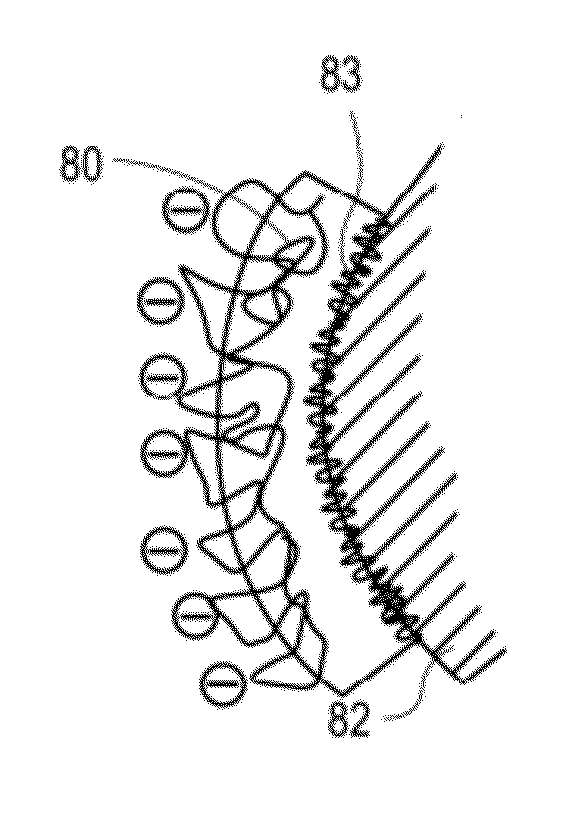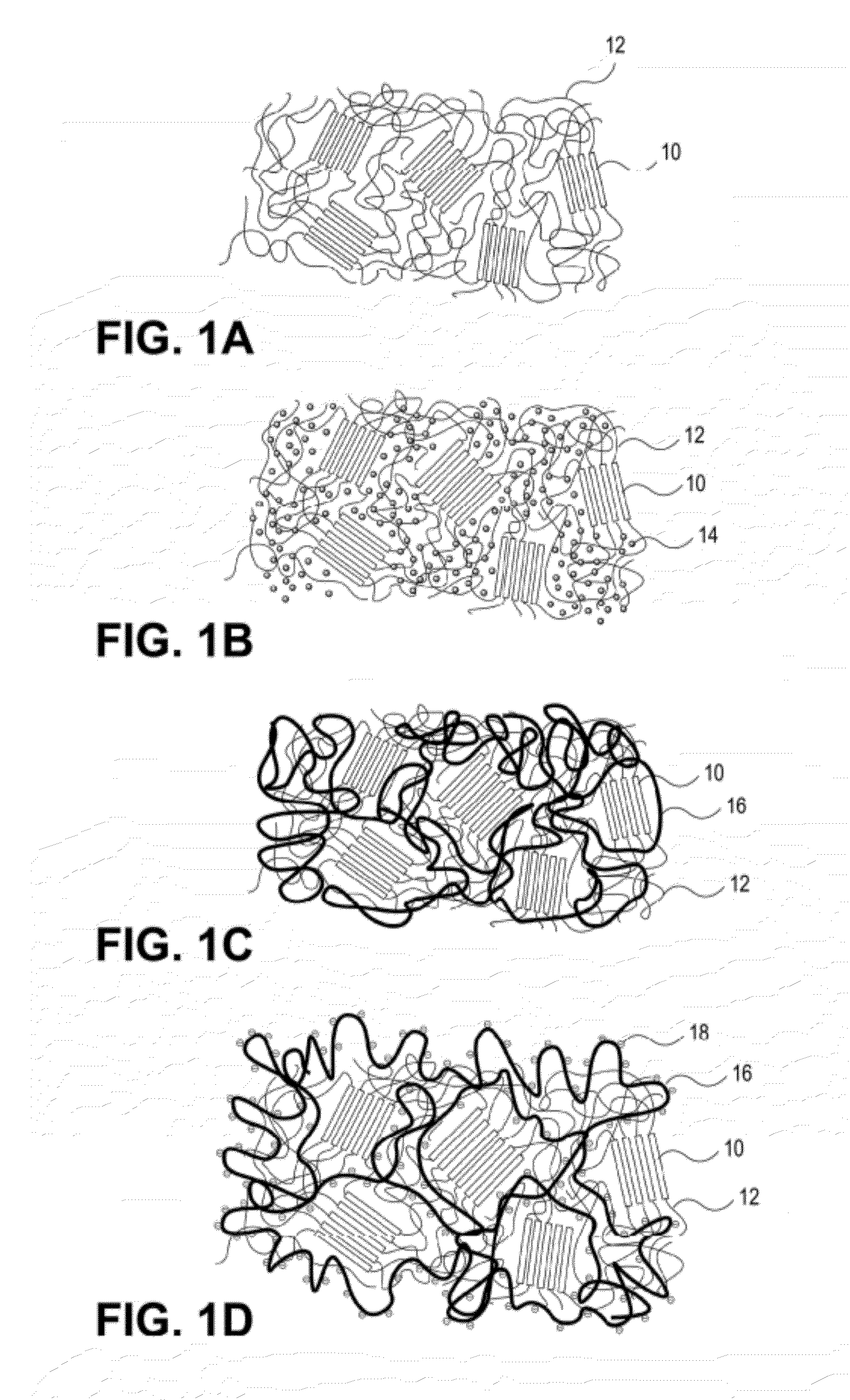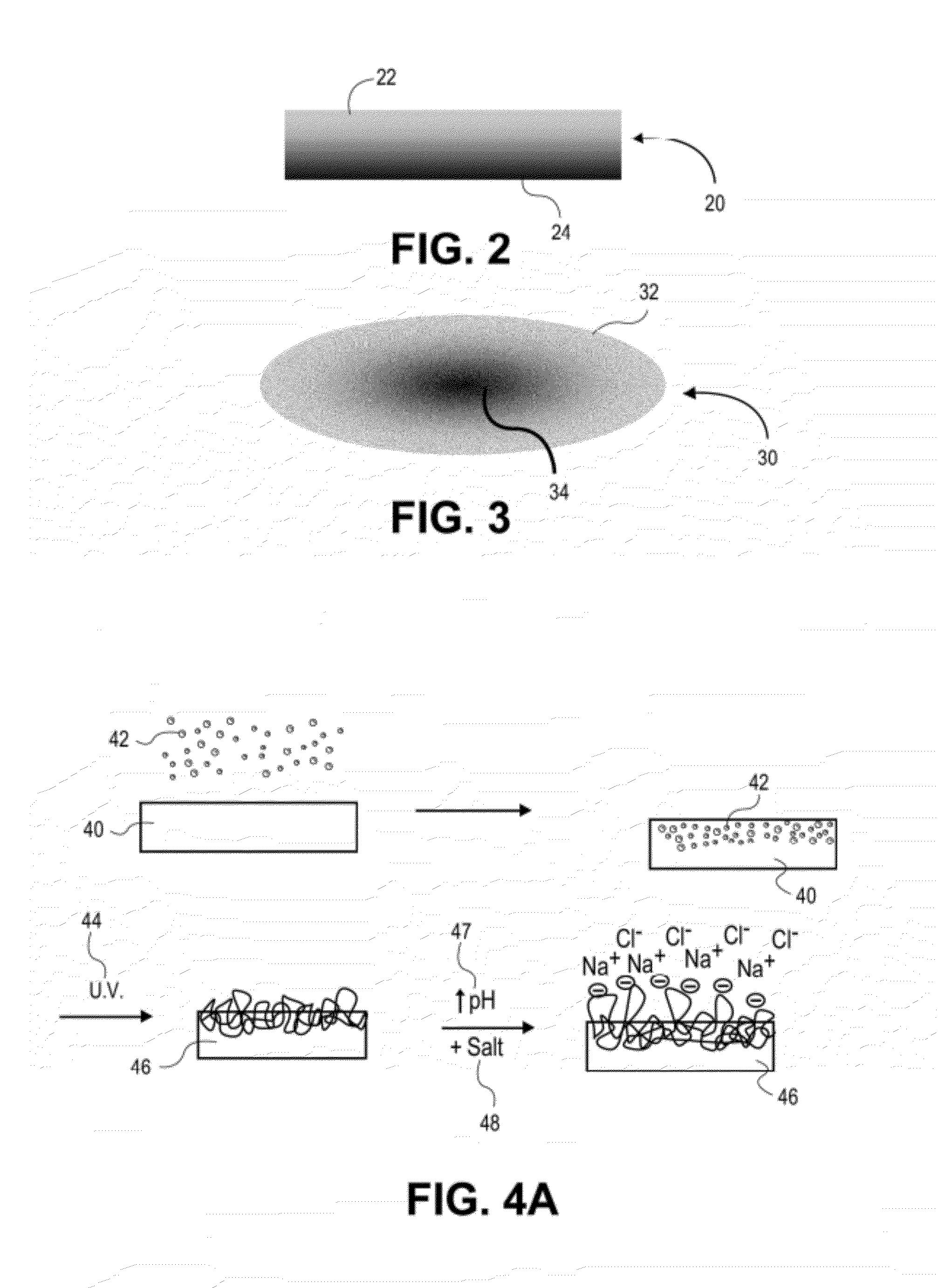Orthopedic implants having gradient polymer alloys
a gradient polymer and alloy technology, applied in the field of fully interpenetrating polymer networks, can solve the problems that the mechanical properties desired for certain medical applications are often outside the range, and achieve the effect of high mechanical strength and hydrophobic starting materials
- Summary
- Abstract
- Description
- Claims
- Application Information
AI Technical Summary
Benefits of technology
Problems solved by technology
Method used
Image
Examples
example 1
[0199]In one example, a polycarbonate urethane (Bionate 55D) was immersed in 70% acrylic acid in water containing 0.1% v / v 2-hydroxy-2-methyl propiophenone and 0.1% v / v triethylene glycol dimethacrylate with respect to the monomer overnight. The polycarbonate urethane was removed from the solution, placed between two glass slides, and exposed to UV light (2 mW / cm2) for 15 minutes. The resulting semi-IPN was removed, and washed and swollen in phosphate buffered saline. The material swelled and became lubricious within hours. In other examples, segmented polyurethane urea, as well as silicone polyether urethane and silicone polycarbonate urethanes were placed in acrylic acid solutions and polymerized and washed in the same fashion to yield a lubricious IPN.
example 2
In another example, a polyether urethane (Elasthane™ 55D) was immersed in 70% acrylic acid in water containing 0.1% v / v 2-hydroxy-2-methyl propiophenone and 0.1% v / v triethylene glycol dimethacrylate with respect to the monomer overnight. The polyether urethane was removed from the solution, placed between two glass slides, and then exposed to UV light (2 mW / cm2) for 15 minutes. The resulting semi-IPN was removed and then washed and swollen in phosphate buffered saline. The material swelled and became lubricious within hours. In other examples, polycarbonate urethane, segmented polyurethane urea, as well as silicone polyether urethane and silicone polycarbonate urethanes were placed in acrylic acid solutions and polymerized and washed in the same fashion to yield lubricious IPNs.
example 3
[0200]In another example, silicone polyether urethane and silicone polycarbonate urethanes were separately placed overnight in 100% acrylic acid solutions, to which were added 0.1% v / v 2-hydroxy-2-methyl propiophenone and 0.1% v / v triethylene glycol dimethacrylate with respect to the monomer. After polymerization and crosslinking, the semi-IPNs swelled and became lubricious. The addition of silicone (polydimethylsiloxane) in the polyurethane adds an extra level of biostability to the material as well as potentially useful surface chemistry and properties.
PUM
| Property | Measurement | Unit |
|---|---|---|
| Temperature | aaaaa | aaaaa |
| Temperature | aaaaa | aaaaa |
| Fraction | aaaaa | aaaaa |
Abstract
Description
Claims
Application Information
 Login to View More
Login to View More - R&D
- Intellectual Property
- Life Sciences
- Materials
- Tech Scout
- Unparalleled Data Quality
- Higher Quality Content
- 60% Fewer Hallucinations
Browse by: Latest US Patents, China's latest patents, Technical Efficacy Thesaurus, Application Domain, Technology Topic, Popular Technical Reports.
© 2025 PatSnap. All rights reserved.Legal|Privacy policy|Modern Slavery Act Transparency Statement|Sitemap|About US| Contact US: help@patsnap.com



